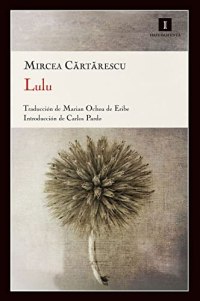
Lulu
by Mircea Cărtărescu.
What is so special about the book “Lulu” by Mircea Cărtărescu? Why has it been considered a masterpiece of Romanian literature and one of the author’s best novels? In this article, I will try to answer these questions and analyze some of the most relevant aspects of this novel that explores the limits of identity, desire and writing.
Lulu is the name of a character who marked the life of Victor, the protagonist and narrator of the novel. Lulu was Victor’s high school classmate who, at an end-of-year party, dressed up as a woman and seduced him. That traumatic and fascinating episode triggered in Victor an obsession with Lulu that would accompany him throughout his life. Victor became a successful writer, but also a lonely being tormented by his ghosts. At his retreat in a Carpathian village, he attempts to exorcise his past through writing, but also confronts his double: an amputee girl who represents the dark, feminine side of him.
The novel is divided into two parts: the first, titled “The Dream”, narrates the meeting between Victor and Lulu at the summer camp; The second, titled “The Vigil”, narrates Victor’s present as a writer and his relationship with the amputated girl. Both parts are intertwined with numerous temporal and spatial jumps, creating a complex and labyrinthine structure that reflects the narrator’s mental state. The novel is also full of literary, artistic and cultural references that enrich its meaning and intertextuality.
Lulu is a novel that questions the concepts of identity, gender and sexuality. Victor is an ambiguous and contradictory character, torn between his attraction to Lulu and his rejection of his own homosexuality. Lulu is also an ambivalent character, embodying both innocence and perversion, both love and violence. The novel explores the darkest areas of human desire, without falling into moralism or sensationalism.
Lulu is also a novel about art and writing. Victor is a writer who seeks to capture his life experience in his works, but he is also a writer who suffers from his craft and from his inability to communicate with others. The novel shows Victor’s creative process, his doubts, his frustrations, his discoveries. The novel also reflects on the role of the writer in society, on the relationship between reality and fiction, on the limits between the autobiographical and the imaginary.
Lulu is a novel that does not leave the reader indifferent. It is a novel that challenges narrative conventions and moral prejudices. It is a novel that invites reflection and debate. It is a novel that demonstrates the literary mastery of Mircea Cărtărescu, one of the great contemporary European authors.
Cărtărescu is a master at creating atmospheres and in “Lulu” he is no exception. The narrative is imbued with a sense of surrealism and dreaminess, with vivid descriptions that often border on the fantastical. Through his poetic prose, Cărtărescu manages to create a world that is both familiar and strange, a place where the ordinary can become extraordinary in an instant.
One of the highlights of “Lulu” is the way Cărtărescu explores the psychology of her characters. Through his interactions with Lulu, we gain deep insight into her desires, fears, and insecurities. Cărtărescu does not shy away from the darkest aspects of the human psyche, and through his narrative, he forces us to face our own shadows.
However, “Lulu” is not just an exploration of obsession and desire. It is also a reflection on the nature of art and creativity. Through the figure of Lulu, Cărtărescu raises questions about what it means to be an artist and about the role of the muse in the creative process.
In short, “Lulu” is a dazzling work that challenges conventions and pushes the boundaries of narrative. With his poetic prose and his unique vision, Mircea Cărtărescu has created a story that is both haunting and beautiful, one that will stay with you long after you have closed the book.
Source: https://algunoslibrosbuenos.com/lulu


